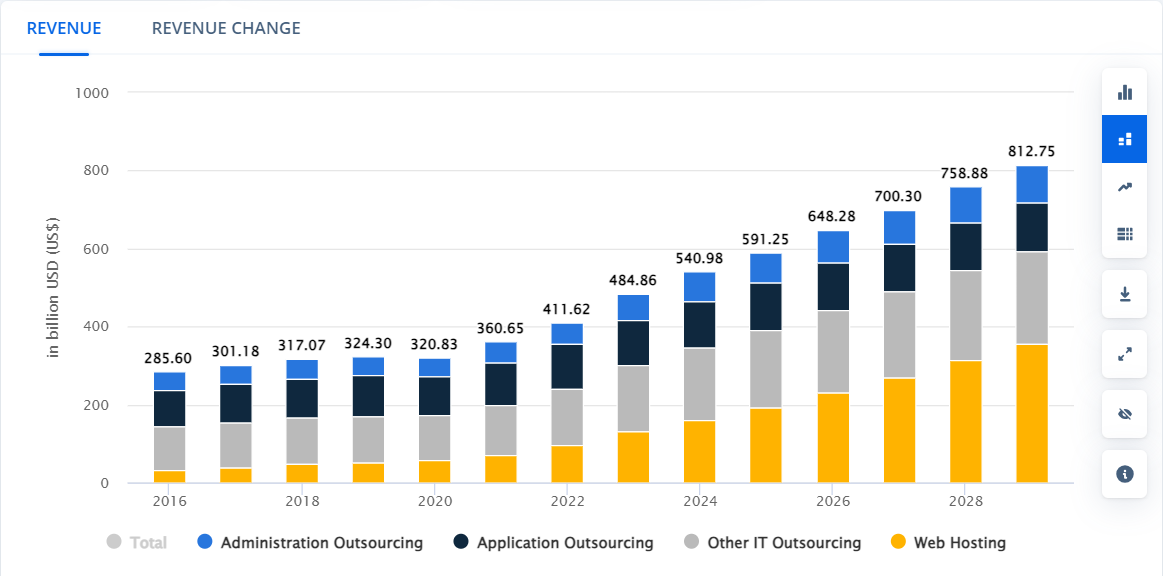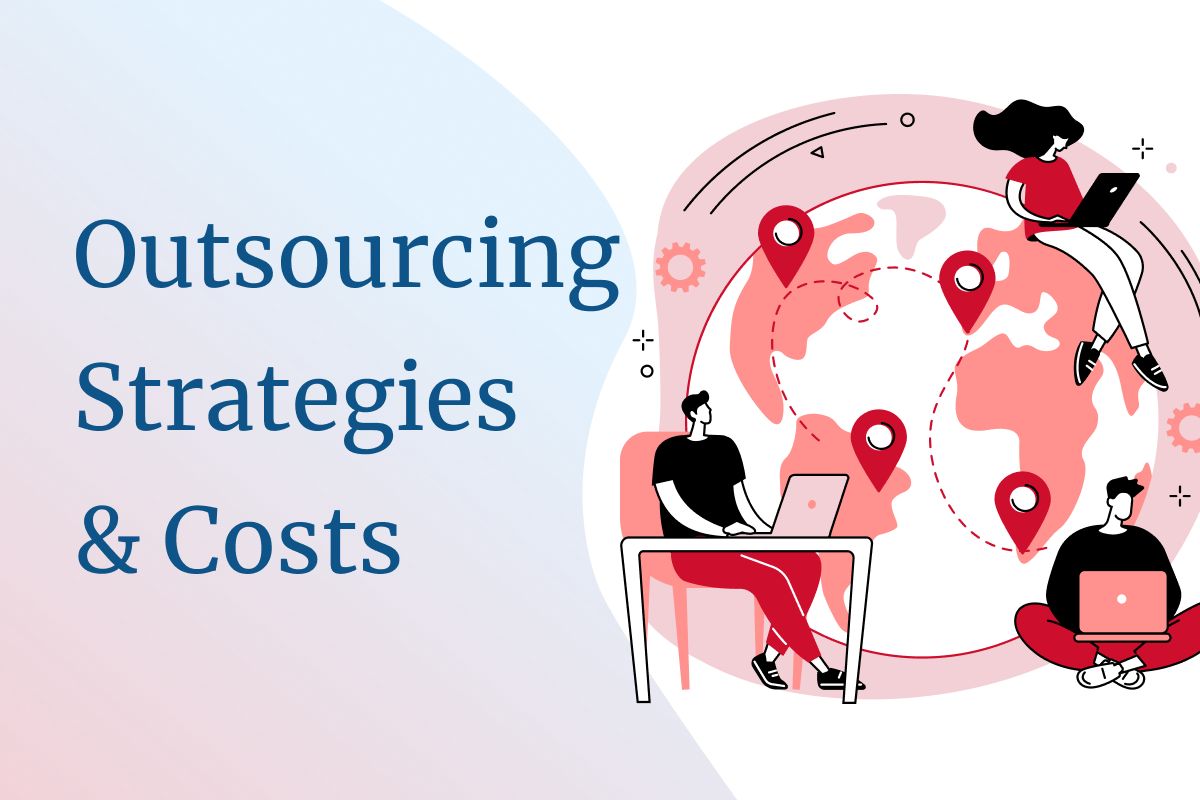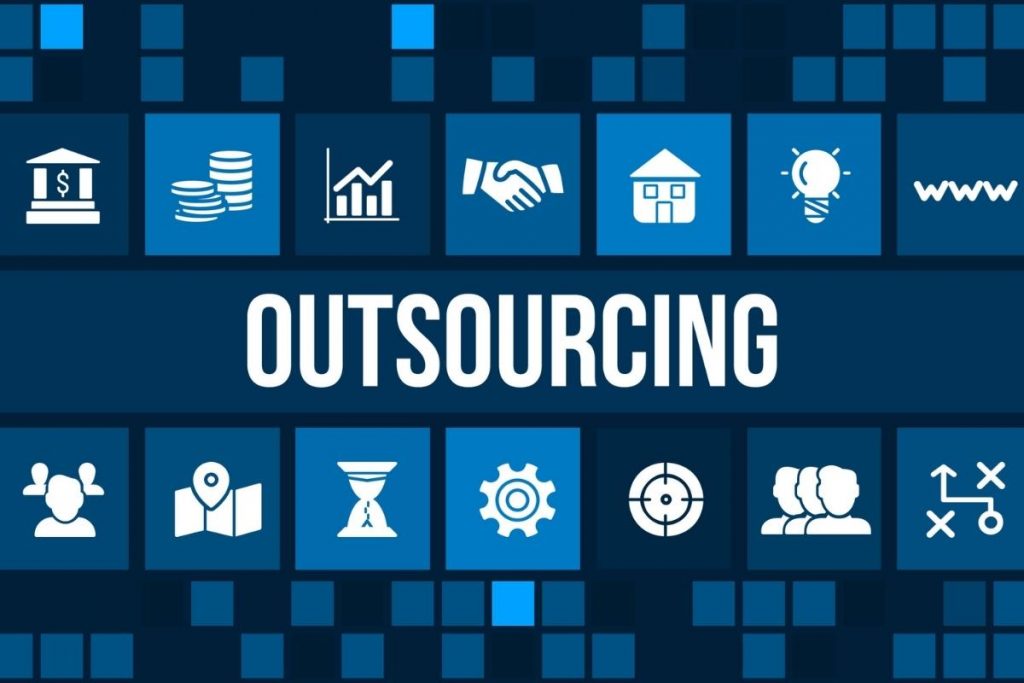Software Development Outsourcing has become a widely adopted business strategy for companies seeking cost-effective and efficient software development solutions. Organizations can achieve their development goals more efficiently by leveraging the expertise of external teams, often located in different countries. However, for companies to make informed outsourcing decisions, it is crucial to understand the associated costs.
According to Statista, the software development outsourcing market is projected to grow at an annual rate of 8.07%, reaching USD 700.30 billion by 2027. A Deloitte study from 2020 found that approximately 70% of companies outsourced software development primarily to save costs.
These figures underscore the importance of understanding software outsourcing costs and rates. As the global IT outsourcing market expands, businesses must grasp the financial implications of outsourcing their software development.
In this guide, we deliver a detailed breakdown of software development outsourcing and its costs, enabling companies to evaluate the financial impact of their outsourcing decisions effectively.

Key Factors Affecting Software Development Outsourcing Costs
Geographic Location
The location of your outsourcing partner can significantly affect outsourcing rates, as highlighted in the offshore software development rates by country. This variation stems from economic conditions, labor costs, and market saturation differences. Outsourcing to countries in Eastern Europe, Asia, or Latin America often proves to be more cost-effective than hiring developers in North America or Western Europe. While differences in time zones can complicate coordination, they also offer the advantage of enabling round-the-clock work cycles.
Project-Related Factors
Several project-specific factors can influence outsourcing costs when seeking assistance from customer service operations to drive business growth.
Project Complexity
The complexity of your project significantly impacts IT outsourcing expenses. Unlike simple business ideas that require only basic features, complex projects often involve intricate functionalities, integration challenges, and extensive customizations. Consequently, outsourcing such projects demands higher expertise and specialized skills to achieve the desired objectives.
Complex IT projects lead to higher labor costs for recruiting skilled development team members with expertise and extend the project duration, requiring multiple iterations to meet quality standards. These factors collectively contribute to increased outsourcing expenses over time.
Timeline and Urgency
The urgency to deliver results within a shortened timeline can also drive up IT outsourcing costs. To meet accelerated client expectations and expedite product completion, third-party vendors may need to reallocate resources, assign additional developers, testers, and specialists, and prioritize tasks to ensure timely delivery. This can involve working overtime or paying higher rates for expedited services, increasing project expenses.
Strict timelines can also lead to quality issues if projects are not managed effectively. Outsourcing vendors must implement risk management measures and thorough testing when cybersecurity risks and errors arise to ensure on-time delivery. These additional steps can increase project costs to account for risk mitigation strategies.

Types of Outsourcing Models
Different outsourcing models cater to varying project needs, offering distinct advantages, disadvantages, and cost structures. These models provide flexibility, allowing companies to effectively manage and execute their software development requirements.
Staff Augmentation
Staff augmentation is a flexible outsourcing strategy that enables companies to add skilled technical resources to their existing teams. It is ideal for projects needing specific skills not available internally.
| Pros | Enhances your team with specific skills, offering high control over the development process and maintaining project continuity. |
| Cons | It can be costly due to hourly rates similar to hiring local talent. Integrating new team members with the existing in-house team may take time, slowing initial progress. |
| Cost Structure | Costs are charged hourly or daily, reflecting temporary employees’ salaries. This model is easy to scale up or down but doesn’t necessarily reduce costs. |
Dedicated Development Team
The dedicated team model provides a team of full-time professionals at the provider’s location, acting as an extra force for the client’s in-house development team.
| Pros | Offers a team solely focused on your project, making it ideal for long-term projects with evolving scopes. |
| Cons | Less flexibility in reducing team size on short notice may involve additional management overheads. |
| Cost Structure | Generally invoiced monthly based on team size and skill set, creating predictable costs while ensuring complete dedication to the client’s project. |
Offshore Development Center (ODC)
An Offshore Development Center (ODC) is an extension of a company in another country, providing integrated, long-term support for software development, testing, and other IT functions.
| Pros | Offers complete control over a dedicated facility and workforce, which is cost-effective for large-scale, long-term projects. |
| Cons | It requires a high initial investment, a complex setup, and effective remote management capabilities. |
| Cost Structure | Involves an initial setup cost followed by ongoing operational expenses, offering significant potential for long-term savings due to lower costs. |
Fixed-Price Model
This approach involves enlisting an outside company to manage an entire project based on mutually agreed-upon terms. It is most suitable for projects with clearly defined requirements and deliverables.
| Pros | Provides a fixed price, simplifies budget management, and offers a clear output. |
| Cons | Limited flexibility for changes, with significant change requests potentially leading to higher costs. |
| Cost Structure | The cost is usually a one-time fixed fee agreed upon before the project starts, helping manage budgets without worrying about escalating costs. |
By choosing the appropriate outsourcing model, businesses can align their project needs with their strategic goals, optimizing costs and operational efficiency.
Technology Stack and Expertise
The technology stack you choose significantly impacts development costs. Cutting-edge or niche technologies like AI often come at a premium due to the need for highly skilled professionals. The more advanced or specialized the technology, the higher the associated costs.
Additionally, requiring specific expertise can narrow your options for outsourcing partners, driving up costs if only a few firms have the necessary skills and experience to meet your needs.
Vendor Reputation and Reliability
Selecting a reputable and reliable outsourcing vendor is essential for minimizing risks and ensuring consistent service. While lesser-known vendors might offer lower rates, they often need more track record, expertise, and infrastructure for reliable results. Partnering with well-established outsourcing providers with a proven success history and positive client reviews may involve higher initial costs. Still, it can provide better long-term value and reduce the chances of disruptions or quality issues.
Equipment and Software Costs
The infrastructure and tools needed for project development significantly impact costs. Expenses for software licenses, secure communication tools, and high-performance hardware can add up, affecting the overall project budget.
Moreover, some projects might require specific compliance or security measures, necessitating additional investments in technology to ensure data protection. By accounting for these factors, businesses can better plan their budgets and select the appropriate outsourcing strategies to meet their needs while controlling costs.
Hidden Costs in IT Outsourcing Projects
While IT consulting services can be a cost-effective way to manage your company’s IT needs, unexpected expenses can impact your budget. To avoid budget overruns, it’s important to consider all potential costs before signing an outsourcing contract.
Here are some common hidden costs that may arise during development:
Change Management and Scope Creep: As businesses adapt to new market trends and technological advancements, unforeseen project scope and requirements changes can lead to delays and additional work, increasing outsourcing costs.
Quality of Code and Maintenance Costs: Poor development practices and low-quality code can result in higher maintenance costs due to the need for rework and ongoing maintenance after project completion.
Intellectual Property Protection and Security Compliance: Protecting sensitive data requires significant investment in cybersecurity measures and data protection protocols. Companies may also need legal consultants to comply with regulatory requirements, adding to IT outsourcing costs.
Vendor Selection and Due Diligence: Choosing the right vendor involves a comprehensive background check and due diligence activities, which require time and resources. These costs should be included in the overall outsourcing budget.
Cultural and Communication Challenges: While offshore and nearshore developers can be a cost-saving option, cultural differences, and communication barriers can add to long-term IT outsourcing costs. Businesses may need to invest in cross-cultural training and communication tools to mitigate these challenges.
Strategies for Optimizing Development Outsourcing Costs
Optimizing development outsourcing costs is fundamental for businesses looking to maximize value and ROI from their outsourcing initiatives. Companies can control expenses and establish successful collaborations with outsourcing vendors by adopting effective strategies. Here, we explore key strategies for optimizing software costs, including thorough vendor evaluation, clear project scope, and regular communication and monitoring.
Thorough Vendor Evaluation
Selecting the right outsourcing vendor is critical for both your project and budget. Assessing a vendor’s technical expertise ensures they have the necessary skills and experience to handle your project efficiently. Evaluating their communication and collaboration capabilities is equally important to ensure smooth coordination throughout the engagement. Checking the vendor’s track record and references offers insights into their reliability, delivery capabilities, and client satisfaction.
Clear and Detailed Project Scope
A well-defined project scope is mandatory for controlling outsourcing costs. A clear scope helps the vendor accurately understand your requirements, minimizing rework and scope creep that can inflate costs. Detailed project documentation, including specifications, user stories, and wireframes, creates a shared understanding of project goals and deliverables. Setting realistic deadlines and milestones facilitates proper resource allocation and avoids unnecessary rush charges or delays.
Regular Communication and Monitoring
Maintaining regular communication with the outsourcing team is vital for cost optimization. It enables timely feedback, issue resolution, and alignment on project progress. Regular progress reports and meetings allow for transparent tracking of milestones and early identification of any deviations. By promptly addressing concerns and issues, you can mitigate risks and delays, avoiding potential cost overruns and rework.
Cost of IT Outsourcing: Is It Worth It?
Outsourcing projects offer more than cost savings; they provide a strategic advantage. For small businesses with limited resources, outsourcing grants quick access to advanced tools, systems, processes, and talent from established companies, enhancing their ability to adapt to the fast-evolving IT landscape. Mid-sized companies benefit from adopting advanced technology to boost operational efficiency and manage digital risks. Therefore, the real question isn’t whether to outsource but how much. Which part of your business operations should be delegated to outsourced teams, and how much so that it allows your in-house team to focus on core competencies?
IT outsourcing can save resources across both IT and non-IT business operations. Each outsourcing service is unique, with costs influenced by pricing models, industry experience, and location. Your specific IT needs will determine ongoing expenses throughout the software development lifecycle.
To optimize outsourcing costs, engage vendors early, select those with transparent pricing and relevant industry experience, prioritize cutting-edge technology, and budget for regular maintenance. If you’re looking for a reliable outsourcing partner, consider SHIFT ASIA. As a customer-centric organization, we emphasize transparency and collaboration to ensure a successful and rewarding outsourcing experience, delivering Japan-quality standards.
ContactContact
Stay in touch with Us




